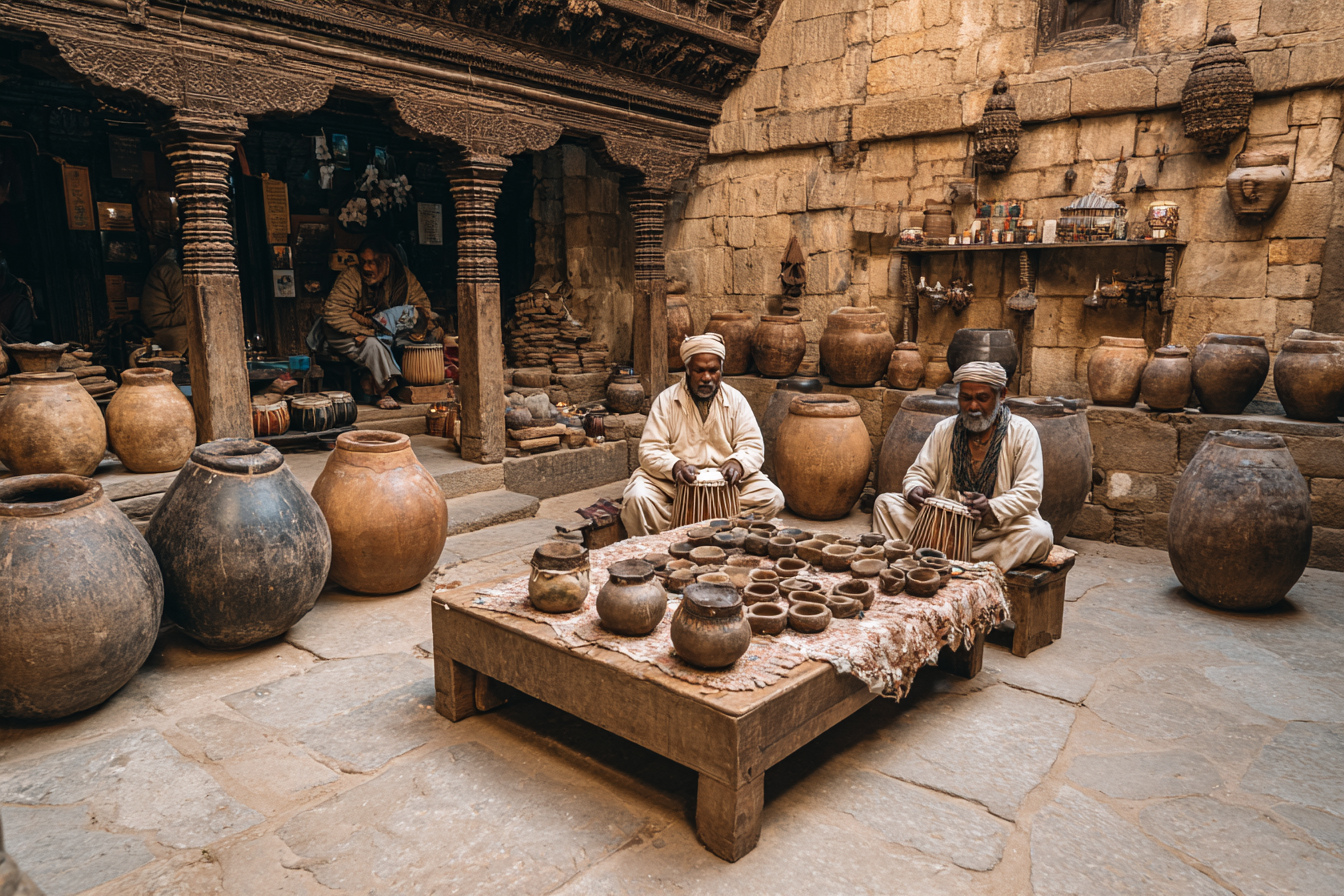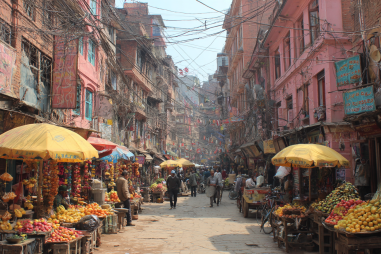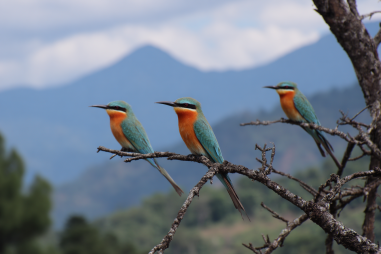Nestled in the Kathmandu Valley of Nepal, Patan is a city brimming with history, artistic splendor, and vibrant traditions. Known for its exquisite craftsmanship and deeply rooted cultural practices, Patan has become a living museum of Nepalese heritage. Travelers who venture into this charming city find themselves stepping back in time, immersed in ancient temples, bustling craft workshops, and lively festivals that have been preserved for centuries. Understanding Patan’s cultural heritage not only enriches your visit but also fosters a deeper connection to the people and their traditions. This article explores the many facets of Patan’s cultural legacy and highlights the efforts to safeguard it for generations to come.
Discovering Patan’s Rich Heritage
Patan, also known as Lalitpur, is one of the three major cities in the Kathmandu Valley, renowned for its rich history dating back over two millennia. The city’s cultural heritage is a blend of Newar culture, Hinduism, Buddhism, and centuries of artistic evolution. What makes Patan truly unique is its well-preserved architecture, intricate wood and stone carvings, and thriving traditional arts such as metalworking and pottery. Walking through the city streets, visitors are greeted by stunning pagoda-style temples, royal squares, and artisan quarters that have remained largely unchanged despite modern urban development.
The city is famous for its Durbar Square, a UNESCO World Heritage Site, that serves as a heart of social and cultural life. Here artisans practice their crafts, vendors sell traditional items, and locals gather for ceremonies and social events, keeping the spirit of Patan alive. Exploring Patan’s cultural heritage offers a vivid glimpse into Nepal’s collective past and the everyday customs that shape its present.
Key Cultural Elements and Traditions
Patan’s cultural identity is deeply intertwined with its festivals, rituals, and craftsmanship. The annual calendar is packed with traditional festivals such as Rato Machindranath Jatra and Bhoto Jatra, which not only hold religious significance but also unite communities through elaborate processions and celebrations. These festivals are living expressions of faith, artistry, and social cohesion, passed down from generation to generation.
Craftsmanship is another cornerstone of Patan’s cultural heritage. The city has nurtured generations of artists skilled in traditional methods of wood carving, metalwork, and thanka painting. The Patan School of Fine Arts is particularly renowned for preserving ancient techniques while inspiring contemporary creativity. These art forms aren’t just souvenirs; they are cultural narratives that tell stories of Nepal’s history and spirituality.
In addition, community life in Patan revolves around age-old social structures and religious practices. Neighborhoods, or “tole,” maintain their own festivals and rituals, helping to reinforce communal bonds and preserve intangible cultural elements. Patan’s heritage is as much about people and their relationships as it is about physical monuments.
The Role of UNESCO Designation
In 1979, Kathmandu Valley, including Patan Durbar Square, was designated a UNESCO World Heritage Site, marking global recognition of its cultural importance. This prestigious designation has played a crucial role in raising awareness about the value of Patan’s cultural treasures and the urgent need for their preservation.
UNESCO’s involvement has helped in mobilizing international support for conservation projects, funding repairs after natural disasters such as the 2015 earthquake, and promoting sustainable tourism. The designation also encourages local authorities and communities to adopt policies and practices that protect the historical fabric of Patan while allowing for responsible urban development.
Being part of the World Heritage list comes with responsibilities, and Patan’s community, along with government agencies, strives to maintain the balance between preserving its cultural assets and accommodating the needs of a growing city.
Community Efforts in Cultural Preservation
The preservation of Patan’s cultural heritage is a collective endeavor involving local communities, artisans, religious groups, and governmental bodies. One of the most commendable aspects of heritage conservation here is the active participation of local residents who see themselves as custodians of their history.
Community groups organize regular cleaning and repair activities, maintain traditional festivals, and pass on crafts through apprenticeships. Artisans’ cooperatives play a vital role in sustaining traditional crafts by providing training and market access for handmade goods. These grassroots efforts ensure that heritage practices remain alive and economically viable.
Moreover, educational institutions and cultural organizations conduct workshops and awareness programs to engage today’s youth with Patan’s heritage. By cultivating pride and knowledge about their cultural identity, they help guarantee that traditions will thrive well into the future.
The Impact on Tourism and Education
Patan’s cultural heritage attracts thousands of travelers annually, eager to experience its unique blend of history and living culture. Tourism generated by the city’s remarkable sites, festivals, and crafts is an essential economic pillar that supports conservation activities and local livelihoods.
Visitors are encouraged to participate in heritage walks, guided tours, and cultural events that provide deeper insights into Patan’s architecture and traditions. Sustainable tourism initiatives promote respectful engagement with local customs and minimize negative impacts on sensitive sites.
Education is another critical component where heritage and tourism intersect. Schools incorporate lessons about local history and arts into their curricula, while museums and cultural centers offer interpretative programs for all ages. These educational efforts help foster a global appreciation of Patan’s cultural richness and raise awareness about the challenges of heritage preservation.
How Travelers Can Respect and Support Patan’s Heritage
Travelers have a unique opportunity to contribute positively to the preservation of Patan’s cultural heritage. By being mindful and well-informed, visitors can help ensure that their presence benefits rather than harms this precious legacy. Here are some ways travelers can respect and support Patan’s heritage:
- Respect local customs and traditions: Observe cultural practices, dress modestly when visiting temples and religious sites, and seek permission before photographing people or ceremonies.
- Support local artisans: Purchase handmade crafts and artworks directly from artisans or reputable cooperatives, which encourages the continuation of traditional skills and boosts the local economy.
- Choose sustainable tourism options: Opt for guided tours that prioritize heritage conservation and avoid activities that disrupt local life or damage historic sites.
- Learn and share: Educate yourself about Patan’s cultural significance and share your knowledge with others to promote broader appreciation and respect.
- Contribute to conservation efforts: Participate in or donate to organizations dedicated to protecting Patan’s cultural heritage, especially in times of crisis.
By engaging thoughtfully, travelers play a part in preserving the soul of Patan and ensuring that future generations can enjoy and learn from this extraordinary cultural environment.
The Enduring Value of Cultural Conservation
Patan’s cultural heritage is a living testament to human creativity, spirituality, and community resilience. Its preservation goes beyond protecting buildings and artifacts; it safeguards the identity and continuity of a vibrant society. As Patan continues to evolve, honoring and conserving its heritage remains essential for fostering pride, education, and intercultural understanding among locals and visitors alike.
For travelers, experiencing Patan’s cultural heritage offers not only memories but also insights into the importance of cultural conservation worldwide. By appreciating and supporting these efforts, we contribute to the preservation of humanity’s shared legacy, enriching our lives and those of future generations.







